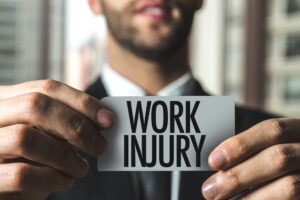Each year, over a million workers in the United States sustain back injuries on the job. The repercussions of these injuries are far-reaching, extending beyond the immediate physical pain. Those affected often deal with financial struggles due to missed work, potentially leading to decreased lifetime earnings. The injury might require a career shift or, in some cases, result in job loss. The financial impact increases due to medical expenses, which can escalate quickly, especially if ongoing treatment or surgery is necessary. For some, this leads to debt or even bankruptcy. The journey to recovery might involve chronic pain or complications like failed back surgery syndrome, requiring continuous medical care. The physical limitations imposed by a severe back injury can be life-changing, affecting mobility or the use of limbs. This physical toll is often accompanied by emotional and psychological distress, manifesting as depression, anxiety, or PTSD. In some scenarios, relying on Social Security Disability benefits becomes a new reality. Going through the Worker's Compensation system in such circumstances can be an uphill battle. Encounters with uncooperative insurance carriers or claim administrators can complicate the process, making it challenging to secure the benefits rightfully owed. Always seek representation from a Indianapolis workers’ compensation lawyer who can ensure you receive proper benefits for your back injury.
Average Settlement Amounts
Every back injury is different, requiring different levels of medical care and time away from work. Looking at average settlement amounts does not inform you what you might receive, as settlements can vary widely. If your back injury requires surgery and prevents you from ever returning to your usual work, you will likely receive much more than someone who needs a few weeks of physical therapy to get back on the job. The best way to know what to expect is to consult a workers’ comp attorney.Understanding Worker's Compensation for Back Injuries
In the context of Worker's Compensation, back injuries such as strains and sprains are quite common and are indeed covered by workers' comp benefits. These soft tissue injuries, while often perceived as less serious compared to fractures or concussions, can have significant impacts on your health and work life.- Sprains: These are injuries to ligaments, the bands of soft tissue connecting bones. In a sprain, the ligament is stretched significantly but not torn.
- Strains: These occur when a muscle or tendon (which connects muscles to bones) gets overstretched but, like sprains, not torn.
- Severity and Recovery: While these injuries are generally not as severe as broken bones or other types of trauma, they can still be serious, sometimes requiring surgery and time off work for recovery. Recovery times can vary, ranging from a few days to several months, depending on the severity of the injury.
Claiming for Repetitive Stress Injuries
Injuries resulting from repetitive stress are also covered under Worker's Compensation. These develop over time due to repeated motions and can cause significant strain or sprain injuries. As with sudden injuries, it's important to report symptoms of such occupational illnesses as soon as they are recognized. Medical documentation from your treating provider can help establish that your injury is work-related.What Factors Affect Settlement Amounts?
Several key factors influence the settlement amount for a back injury under workers’ comp:
Severity of the Injury
The severity of a back injury sustained at work primarily influences the settlement amount in a workers’ compensation claim. Typically, the more severe the injury, the higher the potential settlement. Severe injuries often involve intense pain, longer recovery periods, and more significant interference with daily activities and work duties. For instance, a minor muscle strain might require a brief rest period and minimal medical treatment, resulting in a lower settlement. In contrast, a more severe injury, such as a spinal cord injury leading to paralysis, usually involves extensive medical care, rehabilitation, and potentially lifelong impacts, warranting a much higher settlement.Medical Costs
Medical expenses play a significant role in determining the settlement amount for a workers’ compensation claim. Extensive medical treatments, including surgeries, hospital stays, medications, physical therapy, and long-term care, can substantially increase the value of a settlement. For example, if an injured worker requires surgery for a herniated disc, followed by a prolonged physical therapy and ongoing pain management, these costs will be factored into the settlement calculation. The goal is to ensure that the injured worker is not financially burdened by the costs of medical treatment necessary due to a work-related injury.Lost Wages
Compensation for lost income is integral to a Worker's Compensation settlement. When a back injury forces an individual to take time off work, they lose out on their regular income, which can cause financial strain. Workers’ compensation aims to mitigate this by compensating for the income lost during their recovery. The duration of time away from work and the injured worker's usual earnings are factors in calculating this portion of the settlement. The longer an individual cannot work due to their injury, the higher the compensation for lost income will likely be.Permanent Disability
When a back injury results in permanent impairment or disability, the settlement amount typically increases. This aspect considers the long-term impacts of the injury on the worker’s ability to perform their job and engage in everyday activities. Permanent disabilities may require ongoing medical treatment and adaptations to living spaces and can drastically alter a person's quality of life. Therefore, settlements in these cases consider the lasting effects of the injury, aiming to compensate for the lifelong challenges the injured worker may face. The extent of the disability, as assessed by medical professionals, plays a role in determining the appropriate compensation.What Are Common Causes of Work-Related Back Injuries and Pain?
 Back injuries in the workplace can happen suddenly or develop over time, often related to the nature of the job and activities performed.
Back injuries in the workplace can happen suddenly or develop over time, often related to the nature of the job and activities performed.
Sudden Occurrences Leading to Back Injuries
- Vehicle-Related Incidents: Accidents involving cars or trucks can lead to severe back injuries, often due to the sudden and forceful impact.
- Accidents on Construction Sites: The dynamic and sometimes hazardous environment of construction sites can lead to back injuries, especially if safety measures are not strictly followed.
- Falls from Elevated Areas: Working at heights increases the risk of falls, which can cause serious back trauma.
- Lifting-Related Injuries: Improper lifting techniques or handling heavy objects can strain the back muscles and spine.
- Accidents Involving Heavy Machinery: Using forklifts and other powered equipment poses risks if mishandled or malfunctioning.
- Trips and Slips: Uneven or slippery surfaces can lead to falls that unexpectedly strain the back.
Gradual Development of Back Pain
- Repetitive Strain: Continuous, repetitive motion, especially in jobs requiring bending, lifting, or twisting, can gradually wear down back muscles and spinal structures.
The Role of Negligence
Sometimes, back injuries happen due to the negligence or intentional actions of others, such as a contractor's mistake during a team lift, an error by another driver leading to a vehicle accident, or insufficient safety measures by an employer. In such cases, the specific circumstances can greatly affect the legal implications and potential compensation claims.Recognizing Work-Related Back Injury Risks Across Various Professions
Back injuries are a prevalent concern across numerous professions and industries, affecting workers in various roles and responsibilities. The nature of certain job tasks can significantly heighten the risk of back injuries. Here's an overview of job-related factors that can contribute to back injuries:- Vehicle and Heavy Machinery Operation: Jobs that involve driving vehicles or operating heavy machinery like cranes or excavators can lead to back strain, particularly due to prolonged sitting and the vibration from machinery.
- Extended Working Hours: Long working hours or overtime can contribute to muscle fatigue and weakness, increasing the risk of back injuries.
- Heavy Lifting and Carrying: Regularly lifting or carrying objects heavier than 25 pounds puts significant strain on the back, leading to potential injuries.
- Unbalanced Physical Work: Tasks that rely predominantly on one arm or side of the body can create muscle imbalances, affecting the back.
- Demanding Physical Movements: Jobs requiring postural movements that are awkward, strenuous, or unusual – such as climbing, digging, bending, or kneeling – can put undue stress on the back.
- Pushing and Pulling Tasks: Frequent pushing or pulling of equipment, machines, or carts is another common cause of back strain.
- Restraint Activities: Occupations involving the restraint of others, such as law enforcement or healthcare roles, can pose higher risks due to physical exertion and the potential for violent encounters.
- Warehouse and Distribution Work: Employees in warehouses or distribution centers often engage in repetitive tasks like stocking shelves or filling orders, which can lead to back injuries.
- Stressful Work Environments: Workplaces with loud noises, exposure to gasses or dust, and other stressful environmental factors can indirectly contribute to back injuries, often through tense muscles and poor posture.
- Working at Elevated Heights: Jobs that involve working on ladders, scaffolds, or roofs can be hazardous, with falls posing a significant risk to back health.
- Shift Work: Those working night shifts, particularly, often experience disrupted sleep patterns, leading to fatigue that can weaken back muscles and increase injury risk.
Understanding the Full Extent of Your Injuries
 Comprehensively understanding the full extent of your injuries is important in a Worker's Compensation claim for a back injury. This involves more than just acknowledging the immediate pain or discomfort. It requires a detailed medical evaluation to identify the nature and severity of the injury.
For instance, what might initially seem like a simple back strain can potentially be a more serious injury like a herniated disc, which has longer-term implications.
Getting a thorough medical evaluation is advised. This should include all necessary diagnostic tests such as MRIs, X-rays, or CT scans.
Understanding the full scope of your injury is not only important for your health and recovery but also for ensuring that your Worker's Compensation claim accurately reflects the injury’s severity.
This understanding directly impacts the types of medical treatments required, the duration of recovery, and the overall compensation you might need. A workers’ compensation lawyer can review all this information with you.
Comprehensively understanding the full extent of your injuries is important in a Worker's Compensation claim for a back injury. This involves more than just acknowledging the immediate pain or discomfort. It requires a detailed medical evaluation to identify the nature and severity of the injury.
For instance, what might initially seem like a simple back strain can potentially be a more serious injury like a herniated disc, which has longer-term implications.
Getting a thorough medical evaluation is advised. This should include all necessary diagnostic tests such as MRIs, X-rays, or CT scans.
Understanding the full scope of your injury is not only important for your health and recovery but also for ensuring that your Worker's Compensation claim accurately reflects the injury’s severity.
This understanding directly impacts the types of medical treatments required, the duration of recovery, and the overall compensation you might need. A workers’ compensation lawyer can review all this information with you.